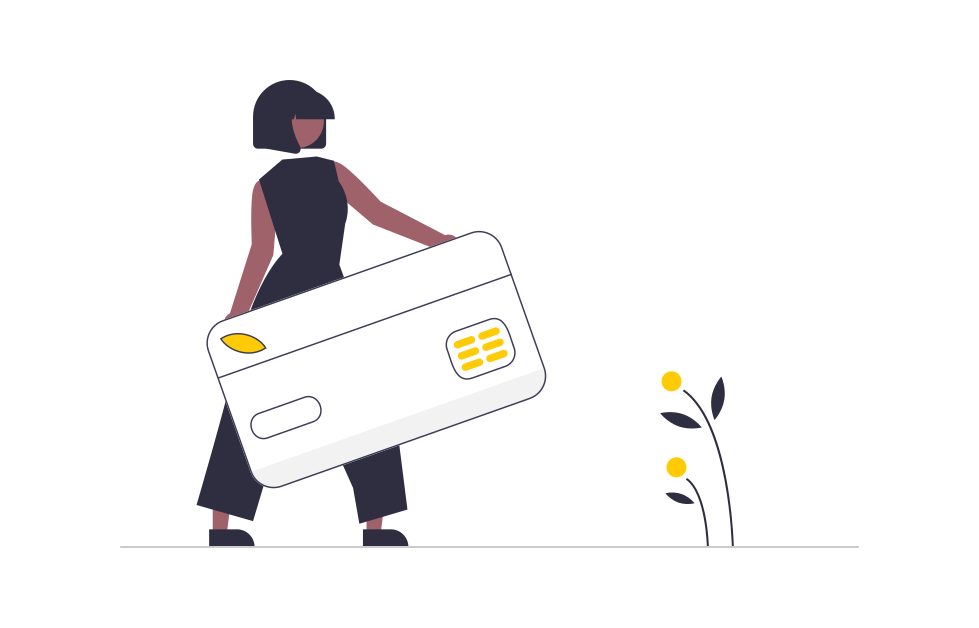
Should Fintech Brands Produce Cinematic Interviews?
Boring ‘talking heads’ are a thing of the past! Fintech brands are finding different and more exciting ways to deliver factual information. Is it time for you to rethink how you engage your viewers?
Introduction
If interviews are a key part of your video marketing or client/employee training, then you already understand the importance of high production values. Even on the most basic interview shoots, good lighting and sound can be the difference between a dull interview that can’t sustain viewer interest, and a compelling video that engages your audience throughout.
Let’s be honest, high quality video content can also help to strengthen your brand image and position you as a market leader. If you’re looking to improve your interview video game, this post will give you some advice on creating cinematic interviews that will make an impression and effectively communicate your message.
What Do We Mean by ‘Cinematic’ Interviews?
A cinematic interview is shot using the principles of motion picture filmmaking, essentially meaning that a high level of visual artistry goes into every shot.
Adding cinematic detail to your interview increases the emotional intensity and visual enjoyment of your video.
Capturing a cinematic interview most likely involves working with a Director of Photography who can use lighting, shot composition and different camera lenses to a high standard to create the desired visual.
Here’s an example of how elevating your production values can make a huge difference.
Firstly, this is a still from a standard interview with a homeowner. Whilst the background gives us some context, it’s busy and pulls too much of the focus.

A cinematic interview, however, means using more complex lighting and different lenses to make your subject pop from the background. Whilst this next interview took place in another homely environment, the elevated production values make the background look more considered and filmic. The result is a confident and artistic video that never compromises on content.
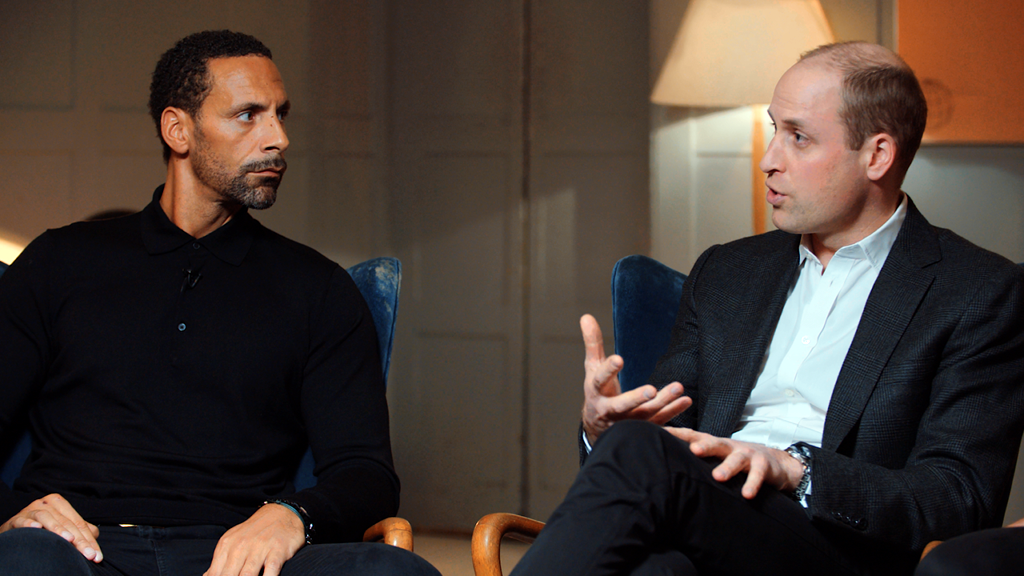
Examples of Cinematic Interviews:
The Pros and Cons of Fintech Companies Using Cinematic Interview
Interviews offer the chance to highlight the human side of your business. It gives your audience a chance to engage with leadership and build a personal connection with your brand. This can be particularly important for fintech companies with lots of invisible processes.
Investing in your video production also sends the message that the content of the video is important and you value your viewer’s time. As a result, using cinematic video in your marketing will help to position your brand as a market leader and improve your brand visibility.
What’s more, as a fintech company it’s likely that your videos may need to be fairly technical. By adding a cinematic flair to interviews, we can create eye-catching content that captures the viewer’s attention and prevents video content from ever becoming too dry.
Because of the high quality lighting and lenses, we’ve found that cinematic videos are often more widely viewed because they’re enjoyable to watch. This can help to communicate your message in a visually pleasing way, staying with viewers long after the video has finished playing.
However, it’s worth noting that cinematic interviews are more expensive than standard interview videos because it entails hiring more lighting, using better quality lenses, colour grading and additional camera angles. What’s more, your video production company may need to bring on a few more specialised crew members to ensure the filming day runs smoothly.
So if you’re investing in a cinematic interview, we recommend that you plan well in advance, take advantage of having a dedicated crew and shoot several interviews in one day.
Adding Visual Flair to Interviews
Location
If you’re hoping to transform a standard corporate environment into an interesting location for a cinematic interview, it’s worth seeing if a member of your production team can come and do a location scout first (we call these recces). On the site-visit they’ll be able to see the amount of natural light the space has, plan a good spot for the interview to take place, and identify any possible snagging issues that might arise on filming day e.g. noisy air con units.
If your company has any unique furniture, interesting artwork, or a bookcase this could add some texture to your interview background. It’s worth talking to your production company about which setting would work best for your video’s intended purpose.
Alternatively, it might be worth hiring an unusual or interesting space for your interview that reflects your brand culture.
Graphics and B-roll
As 65% of people are visual learners, it can be beneficial to cut away from interviews with animation, motion graphics or b-roll to support important points. This helps your audience take onboard the information in a dynamic and visually stimulating way.
B-roll can be extra footage you shoot during the interview, footage from a separate shoot, archival footage or stock footage. Whilst using b-roll typically will incur extra costs, it can make all the difference when it comes to viewer engagement and information retention.
A word of caution when relying on stock footage for B-roll is that it is generic footage that could be used by any brand. In fact, it’s been specifically shot to be as generic as possible so it’s hard to make stock footage communicate your brand tone of voice. We recommend shooting your own specific b-roll as it will intrinsically communicate your values and culture much better than generic stock footage.
3 Examples of Cinematic Interviews
1. Hedge Fund Interview
When a top London hedge fund wanted to communicate important information to investors they chose us to deliver a cinematic interview. For this project we turned a normal meeting room into a perfect setting for a cinematic interview.
Here was the room before the shoot:

The information that was being delivered was high quality investor relations content, so the medium had to match the message. We spent time crafting a lighting setup that would not look out of place on a high-end Netflix documentary.
We used a lighting technique called ‘book lighting’ to light the interview subject. This allows us to light one side of the interviewee with a strong source that causes shadows to wrap gently around the face and fall off gradually. It’s not immediately apparent to the audience but subconsciously it looks ‘high-quality’.
This is in contrast to standard three point interview lighting where harsh nose and eye shadows can make a subject look less attractive than they could have with a bit more care and attention.
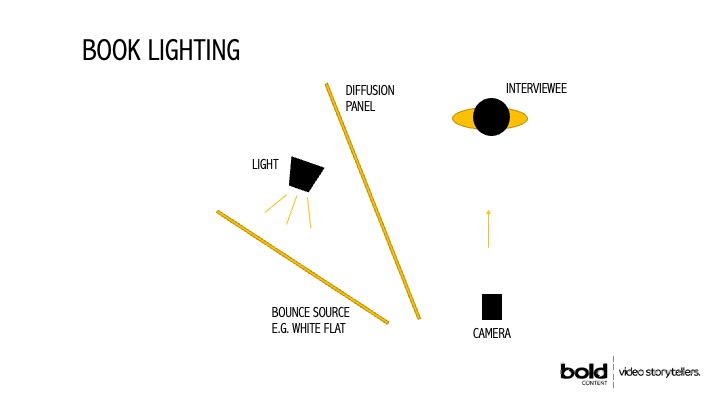
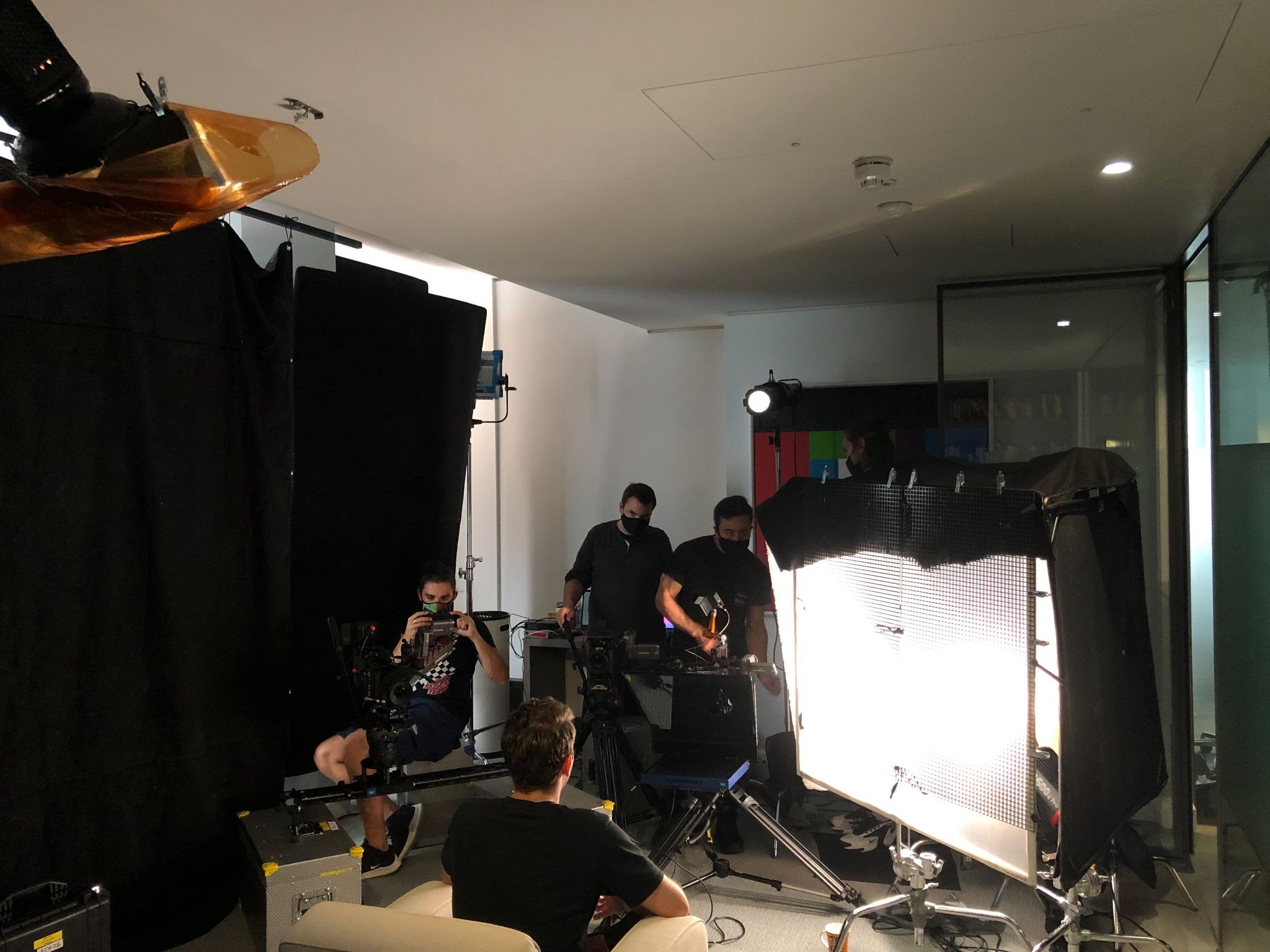
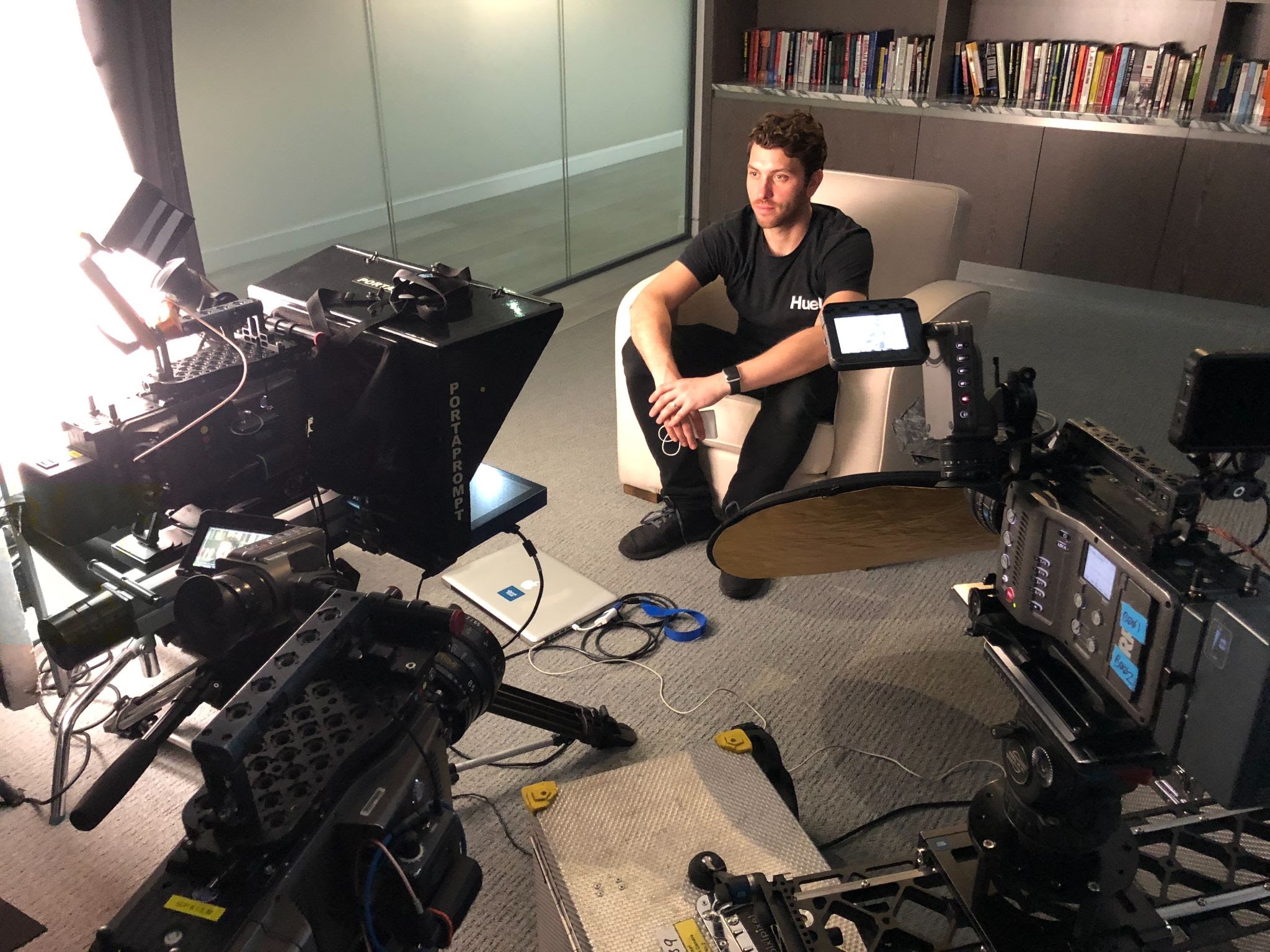

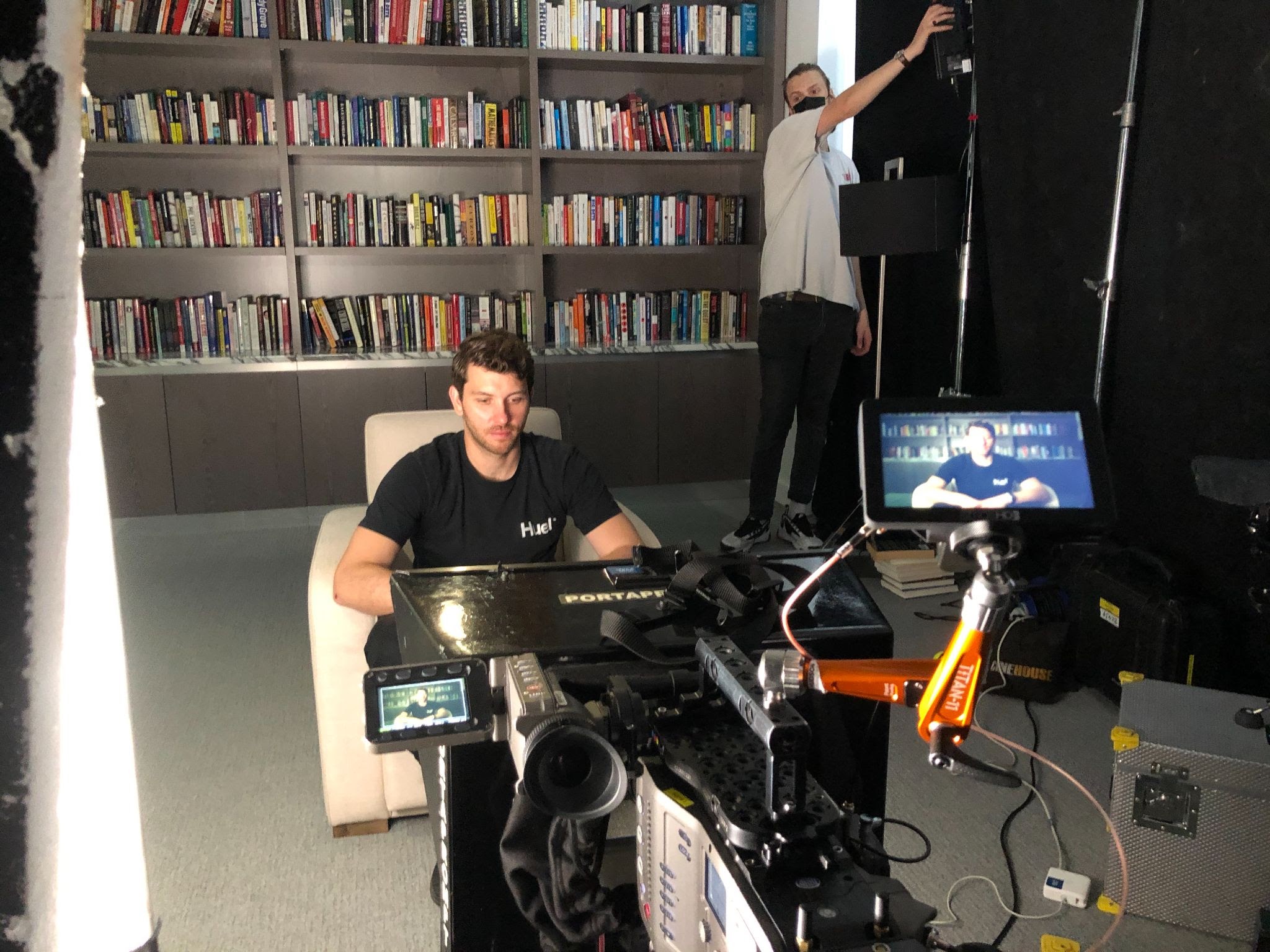
We used a special new LED light called the Aputure 600D which allows us to get loads of light power without heating up the room. This was particularly beneficial as we had to turn off the air conditioning for sound purposes, so the production team was grateful that the lights didn’t get hot in the way that traditional film lights do.

From there, we used accent lights to cast a pool of light on the background, which helped to focus the eye on the interviewee, rather than the surrounding environment.
We filmed using very high quality cameras called Arri Amiras and used special cinematic lenses called Ultraprimes. These allow a shallow depth of field for the background and sharp focus on the interviewee.
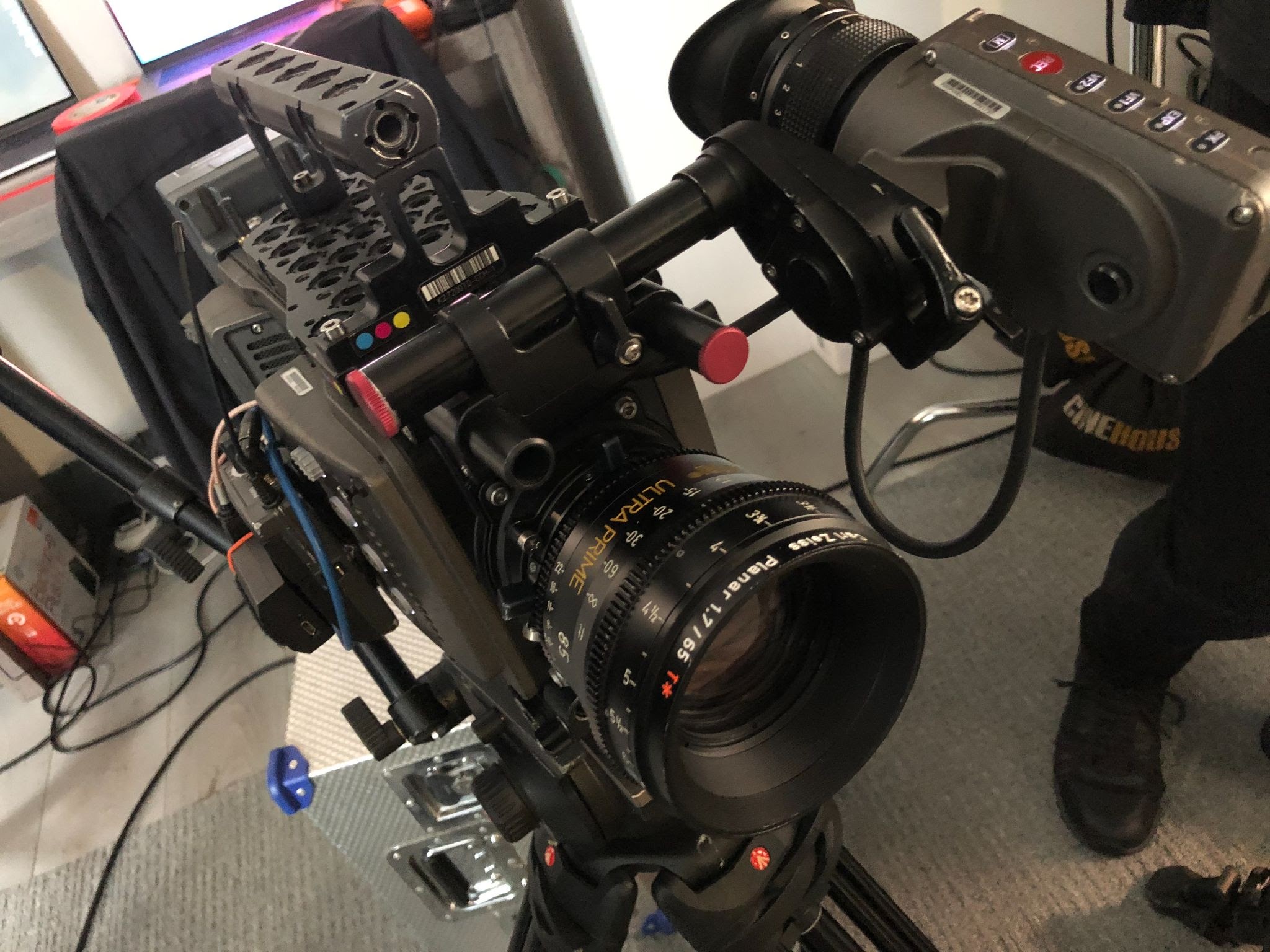

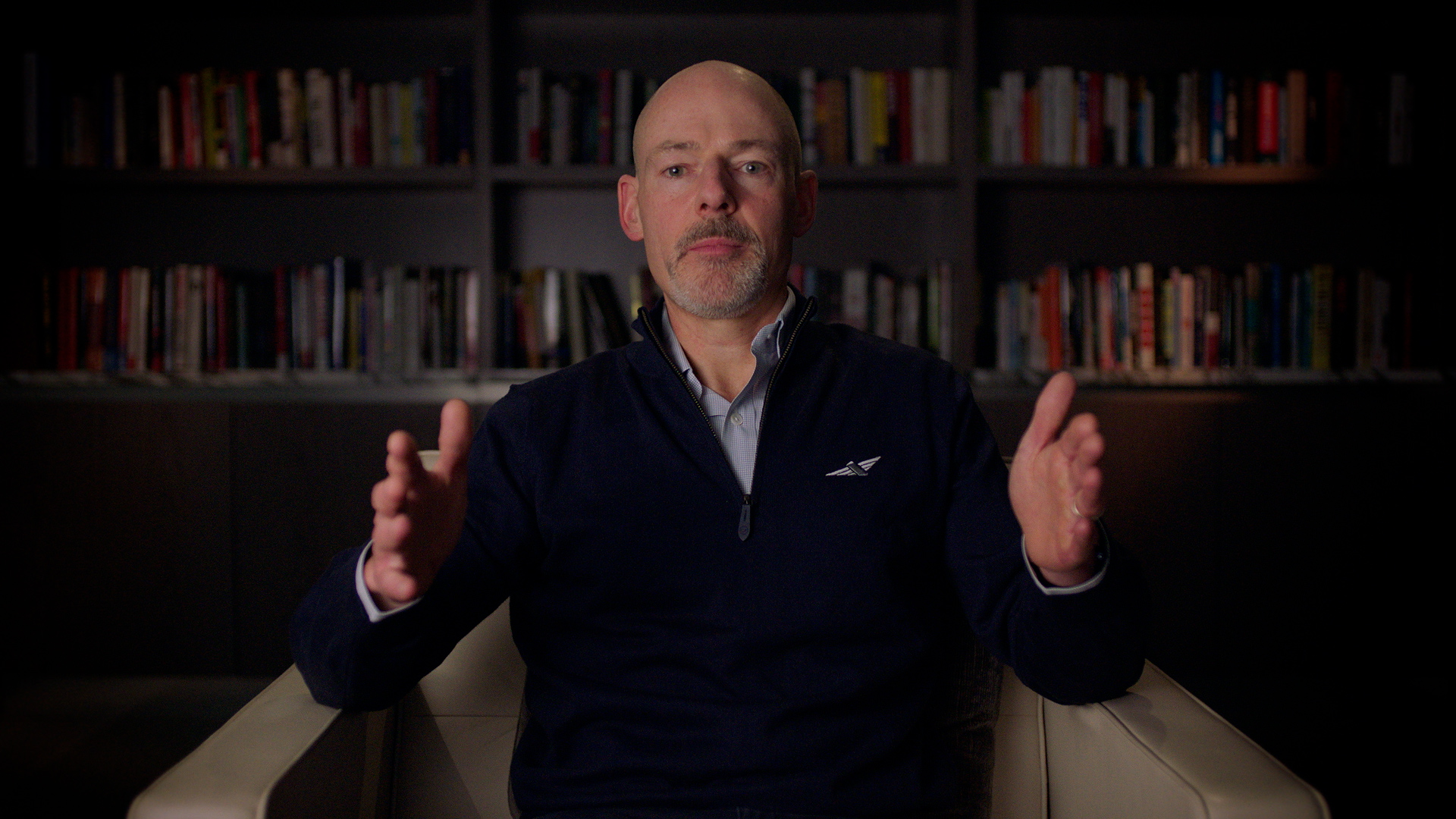
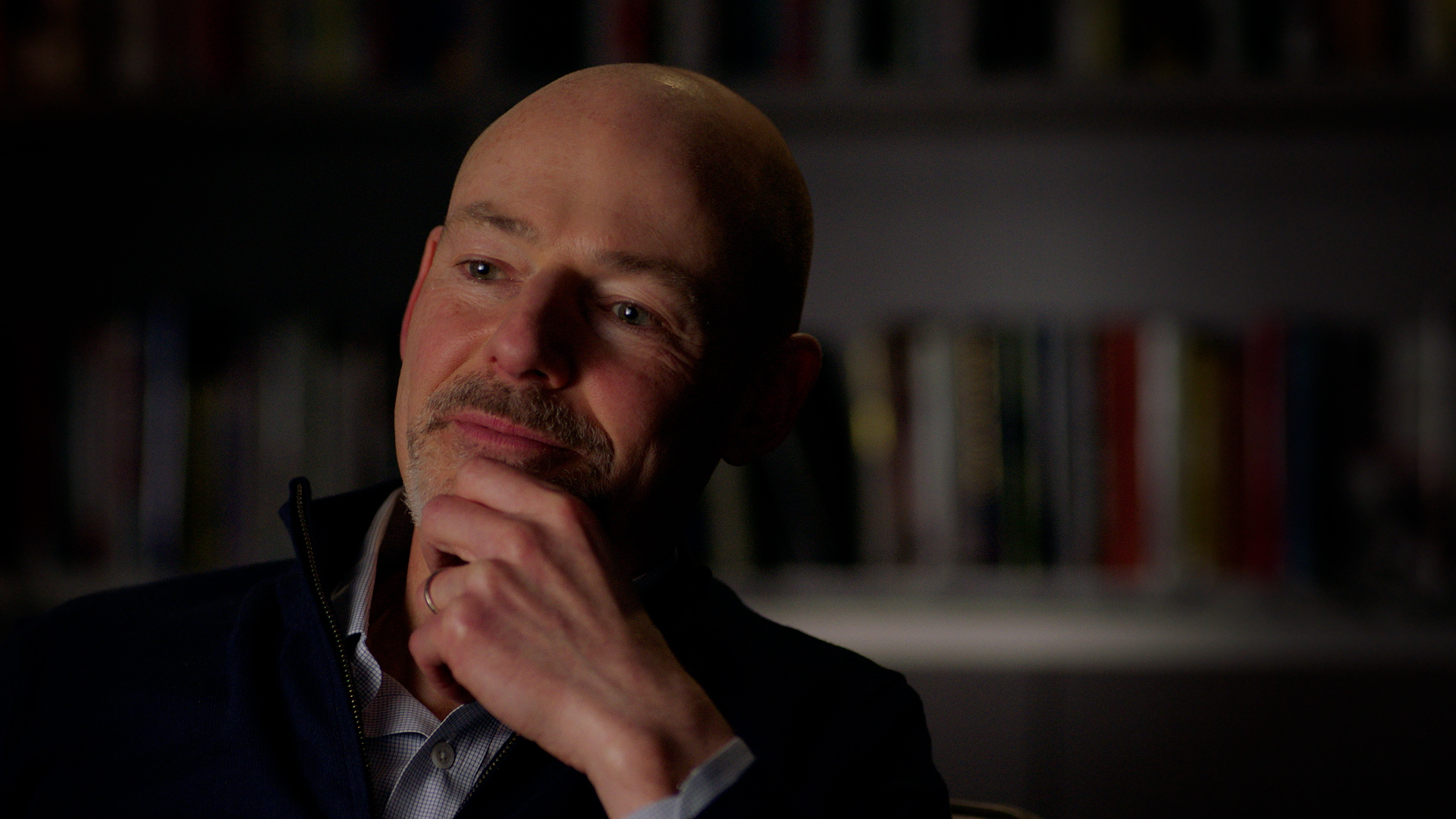
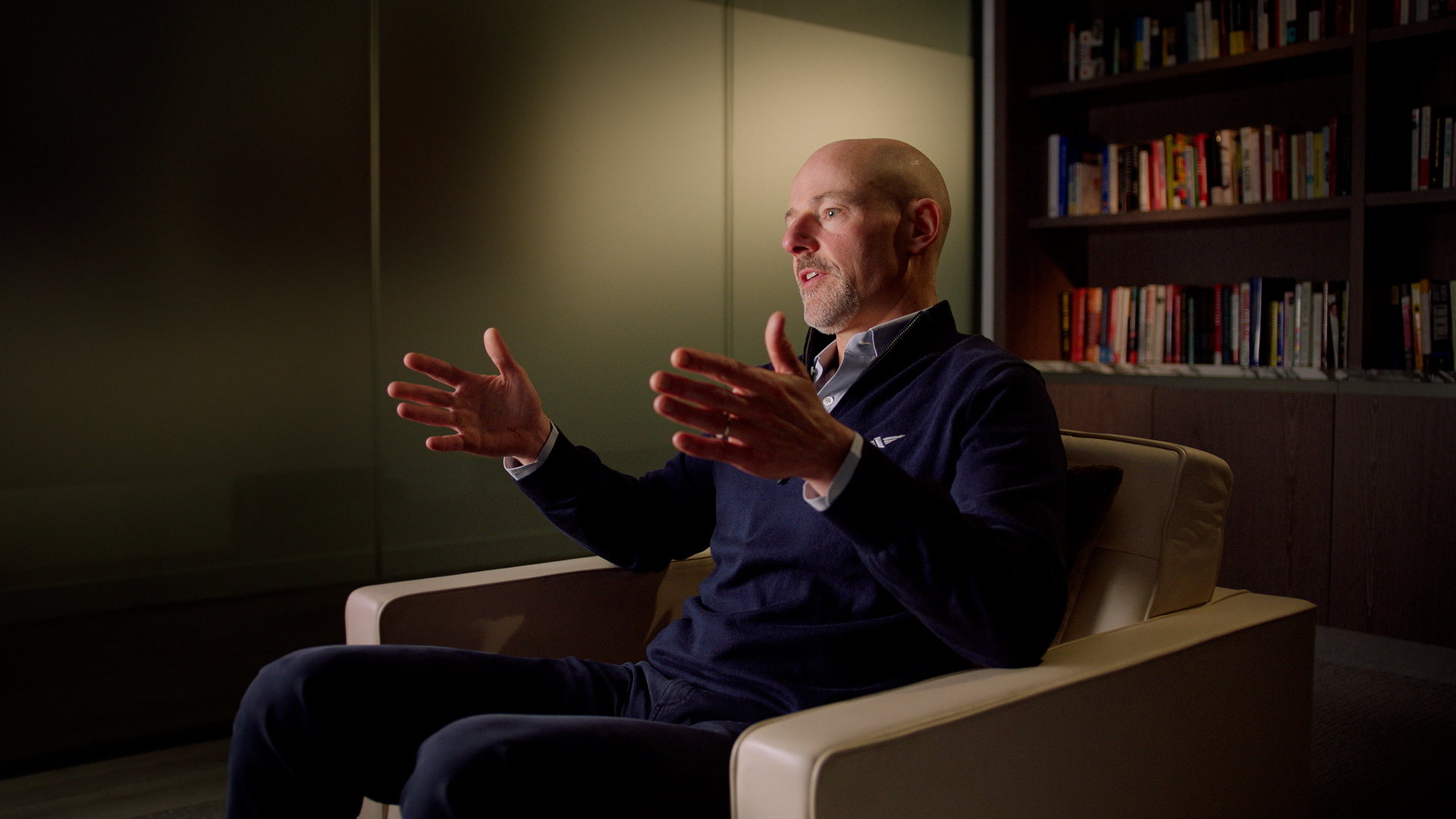
2. Financial Edge Training
For this interview video, we were tasked with creating a promotional video that goes into detail about the course that Financial Edge Training offers, whilst still remaining pithy and interesting to watch.
We were filming in a high-rise building in Canary Wharf with a backdrop of the financial heart of the city. It was important that the background was clearly visible because it gave a semiotic clue to the audience that Financial Edge Training are serious players who operate in financial centres.
We used a two-camera set up, with strong lighting to balance the sunlight coming in from the background. It was important that the lighting didn’t make the subject squint so we used diffusion and reflectors to bounce soft light onto the subject.
Once the video was edited we added supporting information with text and screen grabs, to emphasise their message and give the viewer an idea of what they’d get out of the Project Financing course.
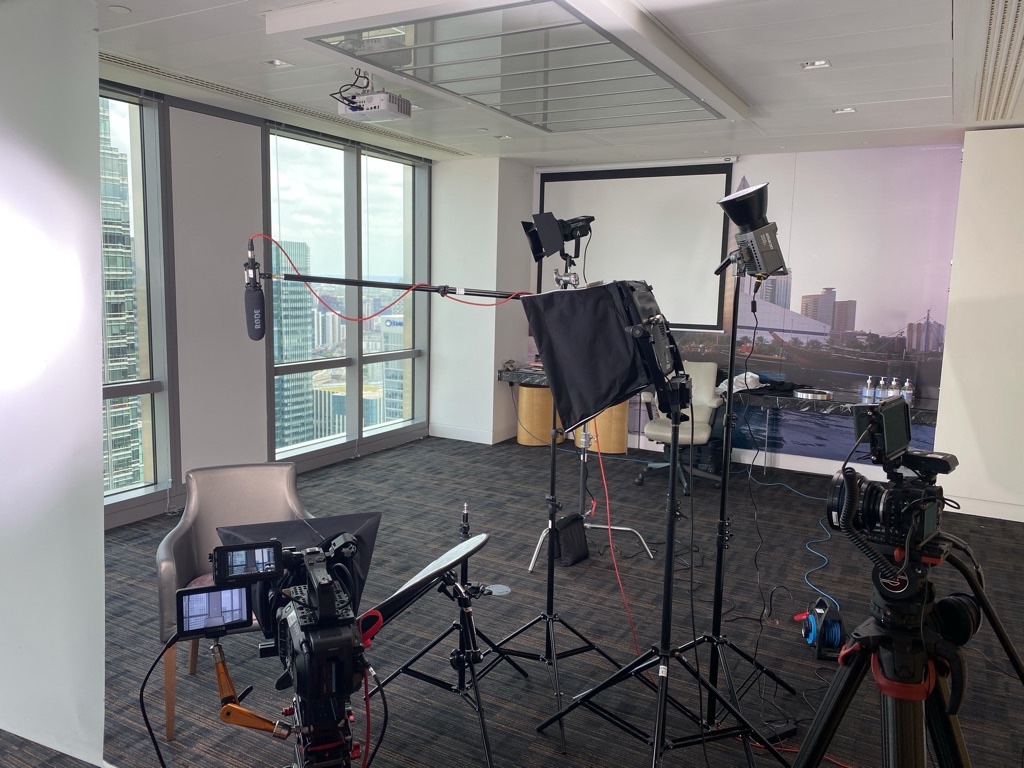
3. Colt Technology Services
The hybrid working video we produced for Colt is a great example of an interview that uses 2D animation, 3D animation, b-roll and motion graphics to bring the video to life.
The animation wasn’t a bolt-on, but instead was thematically linked to the video and was thought about and planned ahead of time. (Keeping watching to the end to discover how).
We chose to conduct parts of this interview whilst the subject was walking, which meant that the shots were always evolving. We also used a soft-focus lighting technique called bokeh, to add some interesting texture to the background:
In the still image below you can see how we chose to film in a space with a deep background. Leading lines draw the eye to the centre of the frame and onto the speaker but the small practical lights in the background make the interview pleasing to the eye.
Despite the fact that it’s a nicely filmed interview we didn’t spend too much time featuring the talking head. Instead we filmed bespoke B-roll footage of Colt staff working from home because the subject of the video is hybrid working. This helps to tell the story and makes the video snappy and fun to watch.

Top Tips for Creating a Brilliant Cinematic Interview
You want to make films that stop viewers in their tracks and take notice. This may be through creative cutaway shots, or the use of mixed media to bring elements of animation into the videos. Whatever you want to achieve, there are different ways to elevate your production into a cinematic experience.
- Scout for a good location
Using interesting locations for your shoot is a sure-fire way to create a compelling setting for your interview. Using a background with a bit of texture will help your interview look more interesting, without needing tons of lights and clever tricks.
For example, in this interview with a Chelsea Pensioner, the backdrop places our subject in a very particular context:

Or this interesting wall we used for the backdrop of the CALM #BestManProject interview series is cosy and inviting, which suits the “fireside chat” nature of this interview series:
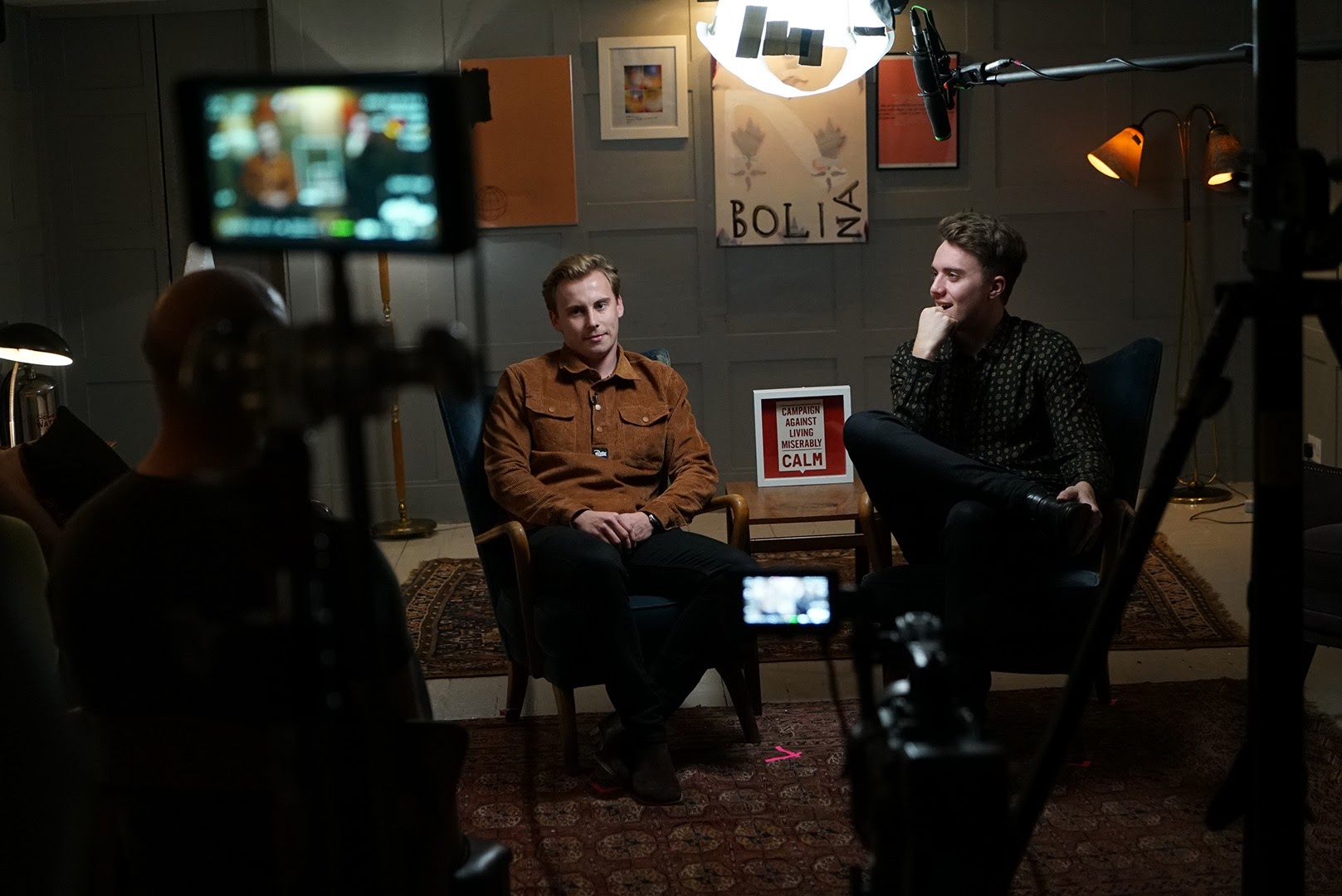
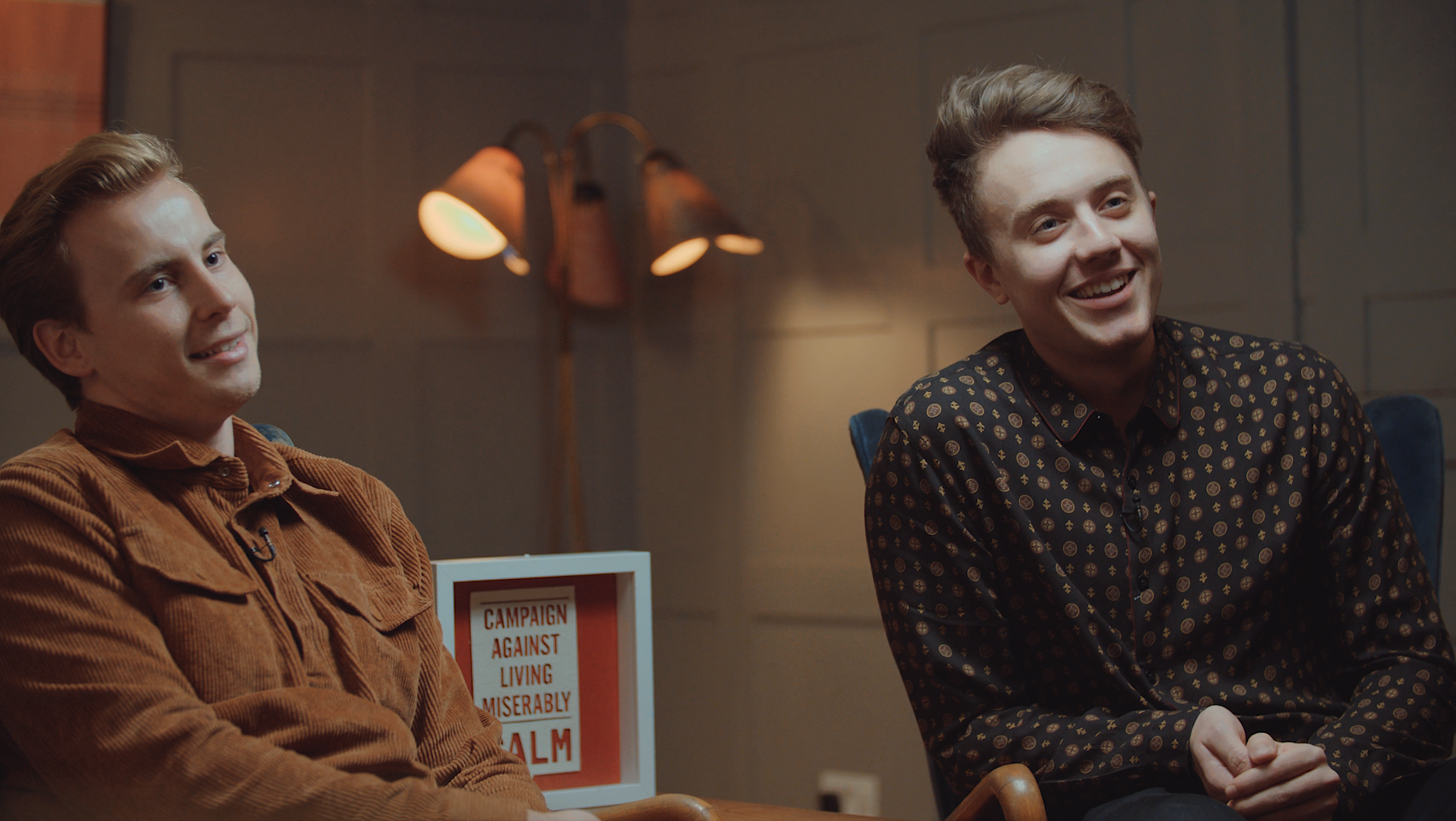
Wherever you decide to shoot your interview, make sure that the setting is relevant to your content and doesn’t distract from your message.
- Use two cameras at least
What really helps to bring interview videos alive is using multiple camera angles. This gives the editor more footage to cut between during post-production and instantly gives an interview video more dynamism.
- Make sure you shoot in 4K
For an interview video, the production company should provide cameras with 4K video capabilities paired with L-series lenses or cine lenses. Our interview video equipment includes the Sony FS7 because of its pin-sharp image quality and ease of use. It allows us to be flexible with our projects and means that we can make adjustments to the style and look easily.
- Consider lighting set up

Your video production company should have this in hand, but it’s important to consider how you’ll be lighting the video. Even plain spaces like an office can be brought to life with the right lighting.
Typically, a ‘3 point lighting setup’ is used for interviews. This is because the result gives us a clean image that sets the interviewee away from the background.
Talk to your production team and ask them for some ideas if you’re looking to light your interview in a cinematic or unusual way.
- Don’t forget about audio
You’ll most likely need a sound engineer or someone experienced in recording audio on set during the interview. Depending on your video needs, and how many interviewees there are, they’ll either set up your talent with lavalier microphones (attached to your talent) or use a boom with a shotgun mic that’s pointed directly in front of your interviewee, but positioned out of the frame (see image). They’ll then listen via headphones when recording to ensure that they are capturing crisp audio.
A good question to ask your production team in advance is what mics they plan on using during the interview, so you can inform your interviewee accordingly. Either way, your talent just needs to speak at a comfortable and consistent level, and try not to raise their voice or speak too softly, as it may affect the levels.
You may want to let your production team know whether you want the lavalier microphones to be hidden or visible. If they’re visible you avoid any kind of rustle from clothing and they’re quick and easy to set up but if they’re hidden you can keep up the illusion that this is a person speaking naturally and the viewers are just listening in.
- Break the ice with your interviewee
You want to make sure that you put your interviewees at ease, to ensure that you’re getting authentic and passionate answers. A good interviewer will spend a bit of time chatting to the subject about their day, or something mundane to get them relaxed and used to being in front of the camera. =Decide with your production company who will be asking the questions.
- Think about what questions you are asking
Whether you’re the interviewer or you’re leaving it down to the production company, it’s useful to remember that your questions need to be leading, to make sure that your interviewee hits all the key talking points.
The goal is to create soundbites, so try to avoid letting your interviewee ramble for too long.
Sometimes it’s good to ask your interviewee to repeat the question back, so the audience understands the context of the question. Or they can rephrase the question in their answer. This means the editor can cut out the interviewer’s voice. This is usually a helpful way to get the interviewee to say the relevant proper nouns too.
- Be consistent with your eye-line
Traditionally interviewees look just off camera to the left or right of the lens. This usually happens because it can be intense for the audience when everything is spoken to camera.
It can be helpful to place your interviewer in the location where your interviewee can see them, as it can help to facilitate a more relaxed conversational tone.
If the subject matter calls for a more personal and informal approach, direct address can be an option.
If your talking heads video features several interviewees, make sure everyone is consistent with their eye-line, to ensure consistency.
- B-roll
Have you factored b-roll into your budget? You may need to line up another day’s shoot, or perhaps you have some archival footage that can be used. Either way it’s important to plan ahead and factor this into your costing.
- Think about plate shots
If you have time at the end of filming, try to capture some “plate” shots, which can be used in the edit as a background to put graphics on top of. Plate shots are a little out of focus, but still relevant to the content of the video. This works particularly well if it’s branded, such as a logo on a wall.
- Yes, you can optimise your videos for SEO
Closed captions, your title and your video description can impact your video’s SEO. Try to make sure that your title and description include any relevant keywords and your desired search query. On a platform like YouTube, it’s also worth checking that your auto-generated closed captions are correct.
3 Things To Remember
- Carefully select your title and thumbnails
The thumbnail is the first thing your audience sees, whether that’s in an email or on social feeds. Can you add bold text to reinforce your video’s message? This helps to make a promise to your audience that they’ll learn something valuable if they watch your video. Adding an impactful title will also help to make your video ‘clickable’. Make sure there’s a hook for your audience, so they know there’s something in it for them. (If you have multiple videos, having a consistent brand image across all thumbnails will help to tie your campaign together).
2. It’s not what you say, it’s how you say it
In an interview, your delivery is more important than what you’re actually saying. Some of the most powerful speeches in history only have one or two key messages, the rest comes from confident delivery. If your interviewee hasn’t had much experience talking in front of a camera, one-to-one presenter coaching can be one of the best ways to enhance presentation skills. Coaching gives subjects the opportunity to focus on key messaging for a particular interview, build confidence and develop a natural presenting style – resulting in fantastic sound-bites that can be used in the edit.
3. Use visuals wisely
Mixing text and speech is incredibly powerful and helps improve retention and engagement.
Including motion graphics, animation, or kinetic typography can help to demonstrate salient points or emphasise provoking statements.
If you’re producing a series of interviews, motion graphics or animation can also help to create a distinct visual look to tie your campaign together.
It’s good to let your production team know in advance if you’re looking to include something like this in the interview, as they’ll position the interviewee in a way that ensures there is enough negative space in the frame for the graphics.
Closing
Cinematic interviews have the potential to elevate your standard talking head videos into filmic, ever-green content that you’ll be proud to share with your audience.
As a fintech company, good interview content can be a valuable resource to get clients understanding more about your services, processes, software and security.
High quality and creative lighting, good sound quality, an interesting background, multiple camera angles and added visuals such as motion graphics and animation are all the ingredients you need to produce a video that is impactful.
The era of bland talking heads is over and in its place is the rise of beautiful filmmaking that takes itself and its content seriously. Let’s create some bold content.
If you have a question about producing cinematic interviews, please don’t hesitate to call us on +44 (0) 203 637 1467 or visit our website.
If you’re interested in receiving presenting coaching ahead of an important interview, you can find out more about our services here.
